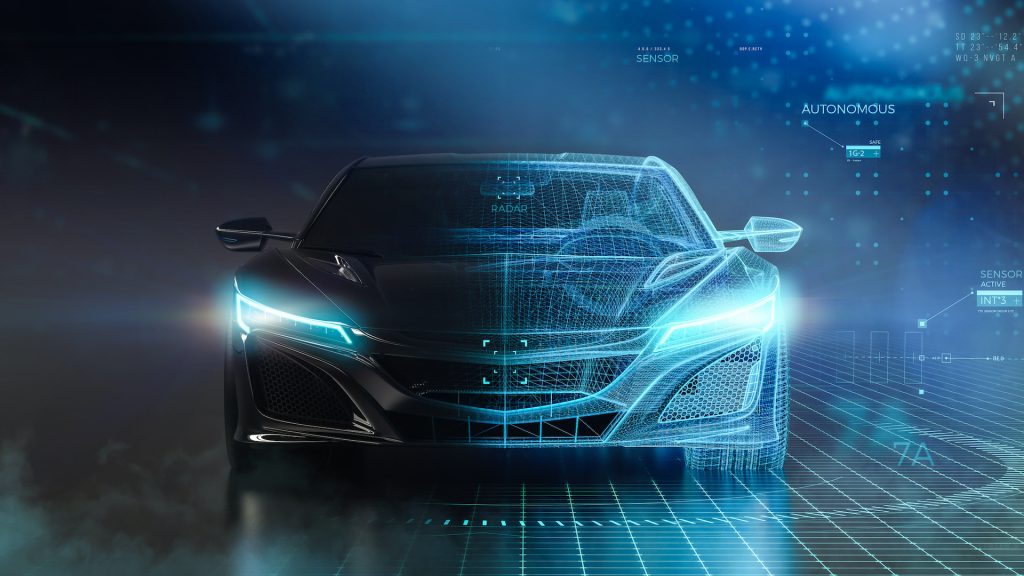Artificial Intelligence Can Design Cars That Are “More Attractive” To Humans

The debate surrounding artificial intelligence continues as we wrestle with how far should humans allow it to evolve. It can already provide us with instant information, create digital images based on wild requests, and execute the speed, accuracy, and effectiveness of human tasks. It already exists in devices like smartphones and smart speakers, and its uses continue to grow at a rapid pace.
As artificial intelligence becomes more and more popular, its ability to be “creative” has expanded to designing products that are visually pleasing to consumers, with cars being one of those top purchases. A study conducted by Kreuzbuier & Malter claims that a vehicle’s visual aesthetics can influence a purchase decision by 60%.
According to John R. Hauser, a professor of marketing at MIT Sloan, “People buy cars based on aesthetics. Styling can make a difference.”
For automakers, vehicle styles come with a high price point, as many brands will invest more than $1 billion for your average car design. It only goes up from there as many automakers will pour up to $3 billion for big redesigns.
Now it seems that many vehicle manufacturers will be looking into using artificial intelligence to generate new designs that are significantly more appealing to consumers at a much more rapid rate, and at a fraction of the cost.
Nobody Buys Ugly Cars
We can all think of at least one model that is such an eyesore that we can barely stand looking at it, let alone wonder how it was able to make it off the production line.
One example of a model that failed to sell due to its aesthetics was the Pontiac Aztek. This crossover SUV was released by General Motors in 2000 with an emphasis on customers that enjoy the great outdoors. While many owners of the Aztek had positive experiences with the SUV, its visual aesthetics failed to receive the same amount of praise.
According to Bloomberg, the Aztek’s intentional “in your face” design turned out to be a bit much for most customers and has been regarded as one of the ugliest cars in recent history. Declining sales eventually prompted GM to discontinue the SUV in 2005.
What automakers learned from the Aztek’s demise was that regardless of how positive and effective a vehicle’s driving experience is, consumers won’t buy it if it’s ugly.
How Can Artificial Intelligence Design Better-Looking Cars?
The possibility of designing the next Pontiac Aztek is what keeps many automakers awake at night. In an effort to avoid this from happening, many brands utilize “theme clinics” where they invite hundreds of targeted customers to provide feedback and criticism of their current designs. Of course, these theme clinics can cost companies roughly $100,000 each, and hosting multiple clinics per year can run up the bill in order to narrow the best designs down before running them through the factory.
This is why artificial intelligence’s ability to utilize “predictive modeling” is starting to sound more and more attractive to automakers that are looking to skip over theme clinics by allowing the technology to rule out which initial designs would likely receive low scores based on aesthetics, thus saving them time and money in the process.
While working with GM in the development of artificial intelligence focused on predictive modeling, Hauser and his team were able to produce two different versions. The first model would generate new car designs based on requests on viewpoints, colors, body type, and look. The second model was a predictive A.I. that would speculate how consumers will rate car designs based on their aesthetics.
Researchers discovered that the predictive model was able to meet and exceed expectations with a 43.5% improvement over base results. “Our model was able to indicate the designs that were good and the designs that were bad,” said Hauser. “But as we got more and more into the process, we realized the real leverage was in creating new designs.”
The team’s generative A.I. was able to produce designs that customers found visually appealing and even made recommendations of models that would later be introduced into the marketplace.
Will Artificial Intelligence Replace Human Designers?
According to the article shared by MIT Sloan, the purpose of artificial intelligence would not replace human designers. Even though Hauser’s generative A.I. could design aesthetically-appealing vehicle designs, it would require the experience of a knowledgeable designer in order for it to meet the right criteria.
Not to mention that a design generated by A.I. wouldn’t serve to be the final draft of the vehicle without going through multiple revisions. The same could be applied to other products like furniture, clothing, toys, appliances, etc.
“There are a number of different ways you can cut a dress,” says Hauser. “A machine learning model can give designers ideas about what customers will think is aesthetically pleasing, but a designer isn’t going to produce exactly what the machine puts out.”









